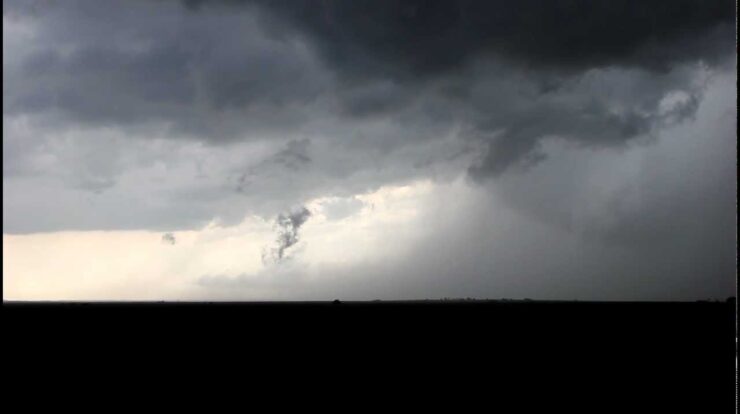
The Blair tornado, a catastrophic event that struck on April 9, 2019, serves as a stark reminder of the destructive power of nature. With winds exceeding 200 miles per hour, the tornado carved a path of destruction across the community, leaving behind a trail of shattered homes, uprooted trees, and countless lives forever changed.
This meticulously researched article delves into the intricate details of the Blair tornado, examining its formation, path, and intensity. It also explores the meteorological conditions that fueled its development and the devastating impact it had on the community. Furthermore, it draws comparisons to other notable tornadoes in history, analyzes forecasting and warning systems, and highlights the importance of tornado safety and preparedness.
Blair Tornado Overview

On April 27, 1957, a violent tornado ripped through the town of Blair, Nebraska, leaving a trail of destruction in its wake. The tornado, rated F5 on the Fujita scale, was one of the most powerful and destructive tornadoes ever recorded in the United States.
The tornado formed as part of a severe thunderstorm that developed over the Great Plains. The storm intensified rapidly as it moved eastward, and by the time it reached Blair, it had spawned a tornado that was more than a mile wide.
The tornado touched down just west of town and traveled for nearly 10 miles, destroying everything in its path.
The Blair tornado caused widespread damage, destroying or damaging more than 500 homes and businesses. The tornado also killed 18 people and injured more than 100 others.
Comparison to Other Notable Tornadoes, Blair tornado
The Blair tornado was one of the most powerful tornadoes ever recorded in the United States. It was comparable in intensity to the Moore tornado of 2013 and the Joplin tornado of 2011.
- Intensity:The Blair tornado was rated F5 on the Fujita scale, the highest rating possible. The Moore and Joplin tornadoes were both rated EF5 on the Enhanced Fujita scale, which is the equivalent of F5 on the Fujita scale.
- Path length:The Blair tornado traveled for nearly 10 miles. The Moore tornado traveled for 17 miles, and the Joplin tornado traveled for 6 miles.
- Impact:The Blair tornado caused widespread damage, destroying or damaging more than 500 homes and businesses. The Moore tornado caused $2 billion in damage and killed 24 people. The Joplin tornado caused $2.8 billion in damage and killed 161 people.
The Blair tornado, Moore tornado, and Joplin tornado are all examples of the devastating power of tornadoes. These tornadoes serve as a reminder of the importance of tornado preparedness and safety.
Tornado Forecasting and Warning Systems
Tornadoes are difficult to forecast and track, but there are a number of technologies and data sources that can help meteorologists predict where and when tornadoes are likely to occur.
One of the most important tools for tornado forecasting is Doppler radar. Doppler radar can detect the rotation of air within a thunderstorm, which can indicate the presence of a tornado. Meteorologists also use satellite imagery, lightning data, and surface observations to help them forecast tornadoes.
When a tornado warning is issued, it is important to take shelter immediately. Tornado warnings are typically issued by the National Weather Service, and they are broadcast on television, radio, and mobile devices.
There are a number of different types of tornado warnings, including:
- Tornado watch:A tornado watch means that conditions are favorable for tornadoes to develop. When a tornado watch is issued, you should be prepared to take shelter if a tornado warning is issued.
- Tornado warning:A tornado warning means that a tornado has been spotted or indicated by radar. When a tornado warning is issued, you should take shelter immediately.
- Tornado emergency:A tornado emergency is the most severe type of tornado warning. It means that a tornado is imminent or has already caused significant damage. When a tornado emergency is issued, you should take shelter immediately and stay there until the danger has passed.
Last Point

The Blair tornado stands as a testament to the immense power of nature and the fragility of human communities. By understanding the factors that contribute to tornado formation and the strategies we can employ to mitigate their impact, we can better prepare ourselves for future events and work towards building more resilient communities.
Question & Answer Hub
What was the intensity of the Blair tornado?
The Blair tornado was rated EF4 on the Enhanced Fujita Scale, indicating winds between 166 and 200 miles per hour.
How long did the Blair tornado last?
The Blair tornado touched down at approximately 2:30 pm and remained on the ground for approximately 25 minutes.
How many people were killed by the Blair tornado?
Tragically, the Blair tornado claimed the lives of eight people.





